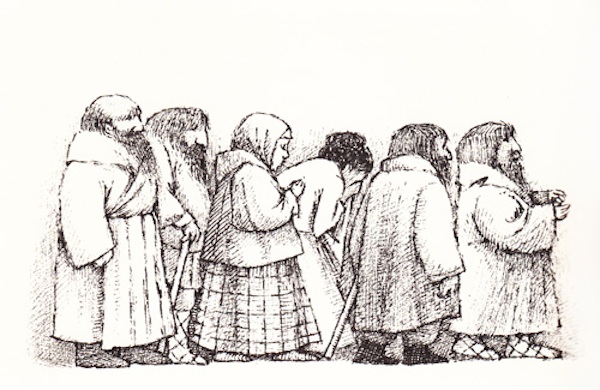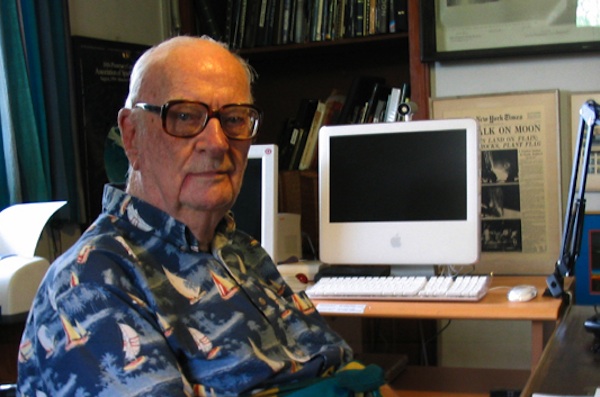Now operating in cities like L.A.,Nude movies San Francisco, Phoenix, Austin, and Atlanta, the robotaxis of Waymo have driven nearly 57 million miles, according to the autonomous vehicle company. With all those miles under its (timing) belt, the Alphabet-owned operation recently released a research paper highlighting some impressive data.
Waymo's report centered on incidents between its vehicles and "vulnerable road users." Compared to human drivers, Waymo's self-driving, electric Jaguars encountered 92 percent fewer crashes with pedestrians that resulted in injuries, 82 percent fewer crashes with cyclists involving injuries, and 82 percent fewer crashes with injuries that involved motorcyclists. There was also good news for car-to-car crashes, with 96 percent fewer injury-involving intersection crashes among Waymos, compared to human drivers, and 85 percent fewer crashes with suspected serious or worse injuries.
"It’s encouraging to see real-world data showing Waymo outperforming human drivers when it comes to safety," Jonathan Adkins, Chief Executive Officer at the nonprofit Governors Highway Safety Administration, said in Waymo's press release. "Fewer crashes and fewer injuries — especially for people walking and biking — is exactly the kind of progress we want to see from autonomous vehicles."
With Waymo planning additional service in Washington, D.C., Miami, and Tokyo, can we expect further progress in road safety in the cities Waymo operates in? Possibly, says David Kidd, the Senior Research Scientist at the Insurance Institute for Highway Safety. While Waymo has demonstrated its individual cars are often safer than human drivers, the company's service is not ubiquitous enough to show that it makes a city's entire road network safer, Kidd tells Mashable. Waymo's effective technology and positive safety record are good signs that we may get there one day, Kidd adds.
SEE ALSO: Smooth, silent, strange: What it's really like to hail a robotaxiKidd: Waymo has done several of these reports, and they have been diligent about being very transparent about the methods they used to get the data they have. They’ve built on and expanded on previous [reports]. This is ... the most comprehensive look of the safety of their AVs to date, and the results are really encouraging.
I can’t speak to Waymo's strategy and philosophy and the differences between Waymo and Cruise and other AV companies, but certainly what stands out is Waymo is making a concerted effort to do research demonstrating the safety of the vehicles on real roads and being public about it. So they publish the research, and they also are now putting information about crashes and exposure, or millions driven in different deployment areas, on their website so anyone can go and replicate what they’ve done or do their own analyses. No other company is doing that right now, and it’s something we would hope other companies would follow Waymo’s lead in and be transparent.
Crashes with pedestrians have been increasing since 2009; I think there's been an 83 percent increase in fatal pedestrian crashes since that year (Kidd is referencing a report from 2022, showing a 40-year high for pedestrians killed by cars). And it certainly is the case that these automated vehicles are really good at keeping themselves from getting into conflicts with pedestrians, as this study provides evidence for; it’s going to help with the issue. The caveat is that AVs are not deployed everywhere, they’re certainly not in everyone’s driveway and not accessible to everyone so if we’re really going to tackle that pedestrian crash problem, it’s going to take multiple types of counter measures and solutions ranging from the technology in cars we can buy today like pedestrian automatic braking, changes in infrastructure that reduces conflicts between pedestrians and vehicles, as well as changing things that can make drivers more aware, as well as pedestrians aware, of their surroundings and pay more attention to distracted driving and distracted walking.
SEE ALSO: Robot, take the wheel: What you need to know about autonomous vehicles rolling out across the U.S.The natural extension of what Waymo has done is to better understand how the deploying of their vehicles inside of a city or inside a transportation network affects the overall safety of that network. They’ve done a good job of showing several times that their vehicles crash less often and are involved in fewer crashes than humans in that same deployment area. What they need to show is, if they have 100 Waymo vehicles or 1,000 Waymo vehicles, then is the transportation system in that area safer for everyone? That’s kind of the next piece — do we get shared safety benefits?
Waymo really demonstrated they can develop a technology and algorithms that take sensor information and make the vehicle operate safely. Can we take some of those learnings and improvements and apply them to the technology in vehicles you and I can buy? There’s a rumor they are potentially collaborating with Toyota; hopefully that’s one thing that comes out of it — Waymo takes their gains and algorithms and software and what they’ve done in the self-driving arena and apply it and translate it into the safety technology that Toyota and other automakers put into the vehicles that are sold to consumers today. That’s where I think you’ll see more rapid advances where the AVs advance conventional vehicles.
Some of the more proactive things are when you’re approaching an intersection and the vehicle is able to see that there are other cars coming and make a prediction that some other vehicles are going to cross your path and not going to stop — it’ll slow you down to avoid the conflict.
AVs can illustrate the potential and some reasons why human drivers slip in terms of behavior and the way they operate vehicles and why they get in crashes. It’s not anything that’s unknown to us right now. The biggest contributor to crash deaths, and have been perpetual really, is speeding, impairment, like alcohol impairment, distractions is another component, but really speeding and impairment are huge and automated vehicles follow laws; they don’t speed and they’re not impaired. That alone is going to eliminate a lot of deaths.
Topics Artificial Intelligence Self-Driving Cars Social Good Cars
 Time to Unite
Time to Unite
 A Rejection Is a Rejection Is a Rejection by Sadie Stein
A Rejection Is a Rejection Is a Rejection by Sadie Stein
 The Best in Wikipedia Prose
The Best in Wikipedia Prose
 English as a Strange Language: Slim John by Mark Asch
English as a Strange Language: Slim John by Mark Asch
 Stablecoin bill advances in U.S. Senate as Trump critics call to end his crypto dealings
Stablecoin bill advances in U.S. Senate as Trump critics call to end his crypto dealings
 Sendak Does Tolstoy, and Other News by Sadie Stein
Sendak Does Tolstoy, and Other News by Sadie Stein
 Town of Marvels by Rosecrans Baldwin
Town of Marvels by Rosecrans Baldwin
 Infinite Pagination, and Other News by Sadie Stein
Infinite Pagination, and Other News by Sadie Stein
 NYT Connections hints and answers for May 10: Tips to solve 'Connections' #699.
NYT Connections hints and answers for May 10: Tips to solve 'Connections' #699.
 A Space Odyssey
A Space Odyssey
 This fat bear's before and after photos are stunning
This fat bear's before and after photos are stunning
 Spoiler Alert: Why We Abandon Books by Sadie Stein
Spoiler Alert: Why We Abandon Books by Sadie Stein
 This Is a Book by Sadie Stein
This Is a Book by Sadie Stein
 No Books Were Harmed by Sadie Stein
No Books Were Harmed by Sadie Stein
 Waymo data shows humans are terrible drivers compared to AI
Waymo data shows humans are terrible drivers compared to AI
 Here Is Hemingway Getting Married, and Other News by Sadie Stein
Here Is Hemingway Getting Married, and Other News by Sadie Stein
 Richard Matheson, 1926–2013 by Sadie Stein
Richard Matheson, 1926–2013 by Sadie Stein
 Rahm Emanuel to Jump in Lake If Kids Read, and Other News by Sadie Stein
Rahm Emanuel to Jump in Lake If Kids Read, and Other News by Sadie Stein
 Google Pixel Buds Pro 2: $40 off at Amazon
Google Pixel Buds Pro 2: $40 off at Amazon
 Lydia Davis’s “Local Obits” by Sadie Stein
Lydia Davis’s “Local Obits” by Sadie Stein
This comment from the New York Times deserves a journalism awardAnother actress describes in horrific detail alleged rape committed by Harvey WeinsteinFixing an iPhone X's screen will cost $279 without AppleCare+Microsoft might be working on a foldable tablet for noteHonda's Gold Wing is the world's first motorcycle with Apple CarPlayReview: Nuheara IQbuds are like AirPods for the worldA robot designed to serve pumpkin soup failed wonderfullyFrustrated driver gets road rage when couple stops their car to make outAnother actress describes in horrific detail alleged rape committed by Harvey WeinsteinHonda unveils a new Sports EV concept car at the Tokyo Motor ShowApple's iPhone X is now available for preAre your Slack Direct Messages really private? Here's how to find out.Lonely Planet's 2018 best cities in the world list polarises localsInstagram's 3Olivia Coleman is the new Queen Elizabeth II on 'The Crown'4 sinister special effects makeup looks that you can try this HalloweenFox News' Greg Gutfeld calls Radiohead 'the poor man's Coldplay'Finally, Twitter forbids Russia Today, Sputnik from advertisingElon Musk is in a Twitter feud with an AI botPeople on Twitter drag reporter who claims nobody goes to libraries anymore To Hölderlin (from Rilke with Love) Lolita Fashion: Japanese Street Fashion and Cute Culture A Memoir of Life at a Moving Company Staff Picks: Stephen Greenblatt, Eve Babitz, Halle Butler, and More When Mascots Go Mad Staff Picks: Mary Gaitskill, Eleanor Davis, Ernst Meister, and More Paradox Formation: Anelise Chen’s Meditations on the Snail The Art of Deodorant Design Jim Harrison: A Remembrance by Terry McDonell Staff Picks: Jeremy Sigler, Mai Der Vang, Nathaniel Mackey, and More Domenico Zindato’s Vibrant Works on Paper, Made from a Oaxacan Book Basquiat: from Graffiti to Art to Tattoo The World’s Gone to Hell, But at Least We’ve Got Milk How Mary Ellen Pleasant Fought 19th Don’t Move Your House. Let Your House Move You. Misplaced Logic: An Interview with Joanna Ruocco Colorful City: My History with Pride Week in the South Michael Chabon on Carsickness, Unsung Heroes of Pittsburgh Post Against Rediscovery: Why the ”Lost Novel” Phenomenon Hurts Readers What Louise Erdrich’s “The Blue Jay’s Dance” Taught Me About Motherhood
2.5194s , 8247.7890625 kb
Copyright © 2025 Powered by 【Nude movies】,Miracle Information Network